Recipients of the 2010 AIA Small Project Awards
By Bustler Editors|
Friday, Jul 23, 2010
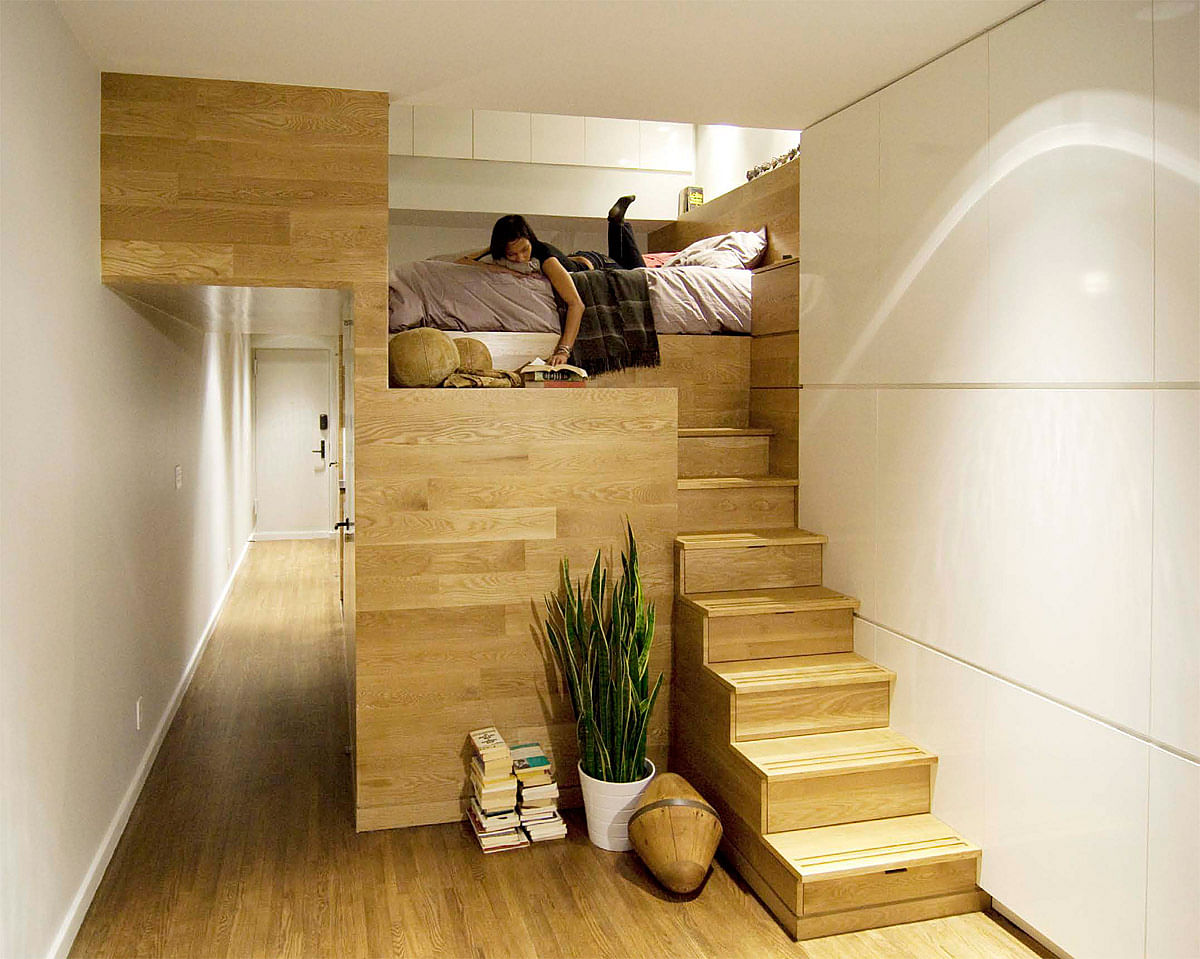
Related
The American Institute of Architects (AIA) have selected the 10 recipients of the 2010 Small Project Awards. The AIA Small Project Awards Program, now in its sixth year, was established to recognize small-project practitioners for the high quality of their work and to promote excellence in small-project design. This award program emphasizes the excellence of small-project design and strives to raise public awareness of the value and design excellence that architects bring to projects, no matter the limits of size and scope.
The jury for the Small Project Awards includes: Tom Howorth, FAIA, Howorth & Associates; Kevin Harris, FAIA, Kevin Harris and Associates; Camilo Parra, AIA, Parra Design Group LTD; Thomas Fisher, Assoc. AIA, Dean, University of Minnesota College of Design and David Miller, FAIA, Miller Hull Partnership.
Award recipients are categorized into three groups; Architecture in the Public Interest, Small Project Objects (up to $50,000 construction budget) and Small Project Structures (up to $500,000 construction budget).
Small Project Structures
East Village Studio; New York City
jordan parnass digital architecture
Living and working in just under 500 square feet, the client had been occupying the space without ever really living in it. The solution was ultimately to combine the kitchen, bath, sleeping loft and a new walk-in closet into an intricately sculpted wood-paneled central service core. The space outside of the core area would remain as flexible as possible, with millwork finished in a high-gloss white to read as part of the shell and stand in contrast to the wooden service core.

Salve Staff Canteen; Milwaukee
Johnsen Schmaling Architects
This small canteen serves the cooks, janitors, and maids of an ornate downtown hotel built in 1893. Located deep inside the building’s subterranean belly and without access to daylight, the canteen was carved out of a cluttered maze of residual spaces previously occupied by closets, obsolete mechanical equipment, and a make-shift break room. Invisible to the hotel guests above, this modest back-of-the-house project demonstrates architecture’s transformative power, regardless of scope or budget limitations, benefitting a community of workers at the bottom of the economic food chain.
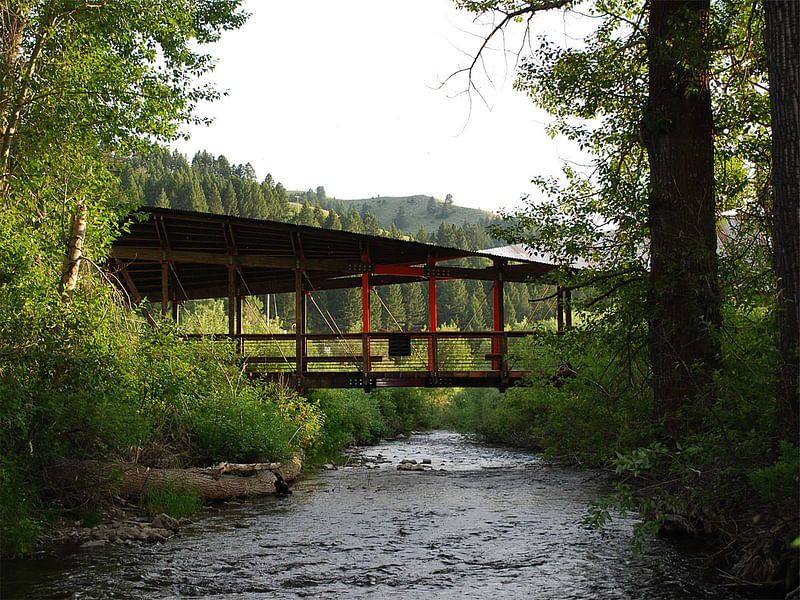
Kevin Mundy Memorial Bridge; Bozeman, Montana
Intrinsik Architecture
With a clear span of 50 feet, the bridge is two halves made up of two opposing shed trusses, each with a high part and a lower part. The moment frame, accentuated by powder-coated orange steel, joins the two wood halves together. Seating is designed to accommodate many and offer dynamic shelter to contemplate the art of the structure and the nature of the place. From various perspectives, including the winding approaches and from points high along the trail, the dynamic form continues to surprise and impress.
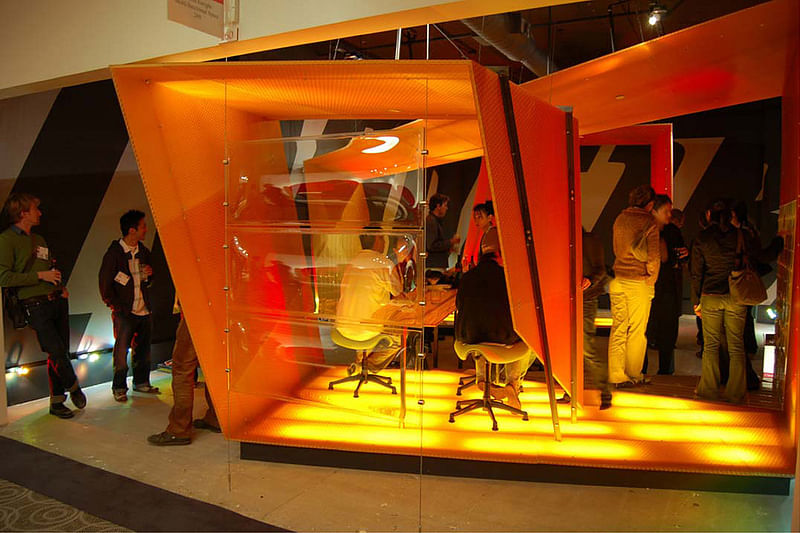
[Wide] Band - Nomadic Café; Los Angeles
Griffin Enright Architects
[WIDE]BAND is a 600-square foot, portable project with the flexibility to accommodate a multiplicity of functions. Originally designed as an installation for NeoCon West, it was then moved to the A + D Museum in Los Angeles where it functioned as a café by day and as a bar/lounge space at night without altering the configuration. The name, [WIDE]BAND, alludes to the physical loop formed by the surfaces and to the broadband technology supporting the wireless Internet access provided.
Small Project Objects
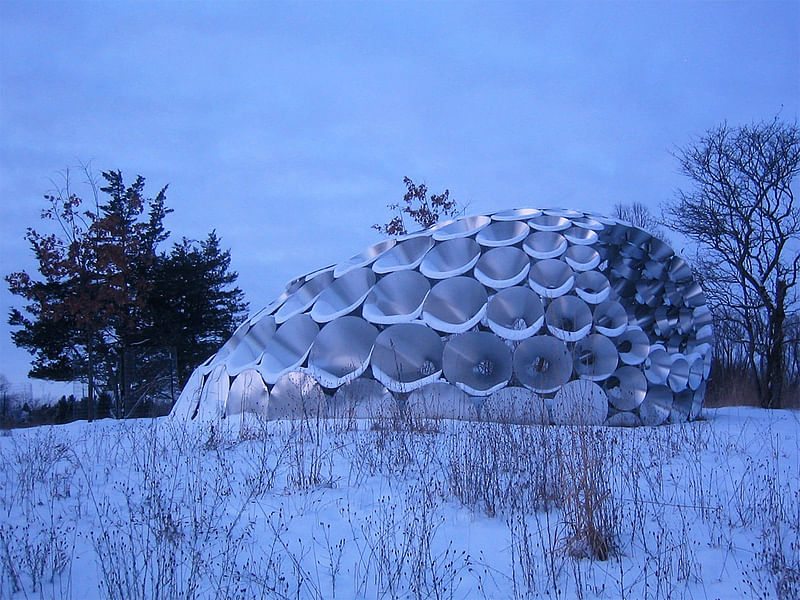
Shadow Pavilion; Ann Arbor, Michigan
PLY Architecture
The Shadow Pavilion explores the paradox of a perforated structure where the removal of material makes a structure lighter and weaker. The Shadow Pavilion, is both a structure and a space made entirely of holes. The pavilion surface is made with over 100 aluminum laser cut cones that vary in size. Beyond testing the limits of sheet aluminum, the cones funnel light and sound to the interior space, offering visitors a space to take in the views and sounds of the surrounding landscape.
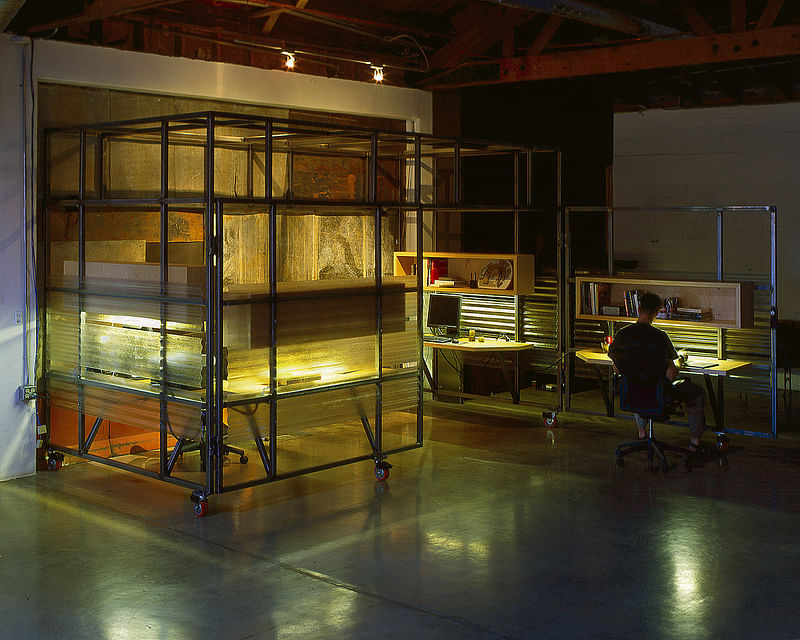
plug-in satellite office – ASU; Phoenix
mark ryan studio
When not in use the steel tube frame enclosure can compact to 7’ x 14’ and can be moved as necessary throughout the studio. When fully deployed it occupies a floor space that is 14’ square feet and accommodates one to four persons. It can be ‘plugged-in’ as needed around the entire studio perimeter where data and electrical services are located. The specific site for the satellite inside this historic warehouse was chosen for its active, energetic atmosphere within the emerging downtown arts district that sits adjacent to the university’s downtown campus in process.
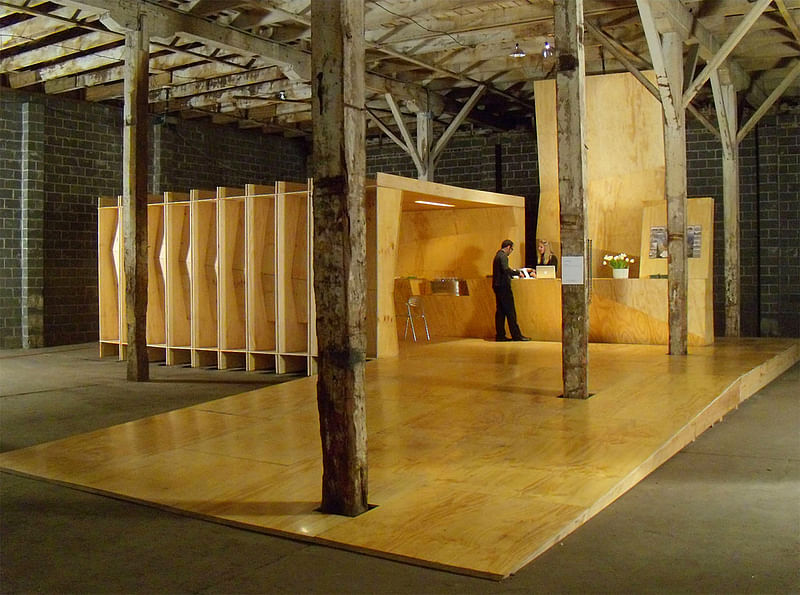
Prospect.1 Welcome Center; New Orleans
Eskew+Dumez+Ripple
The Welcome Center for Prospect.1 (P.1), which is the largest biennial of international contemporary art in the U.S. is housed in the historic Hefler Warehouse – and serves to orient visitors to the city and the biennial. The design was inspired by the shape and scale of shipping containers, a nod to the significance of the port to the city’s economy and a reference to the nature of delivery for much of the art exhibited for the biennial. Due to constraints of time and budget – the entire project was designed and constructed in 6 weeks at a total cost of $28,000 – a single construction material, plywood, was selected that was both inexpensive and readily available.
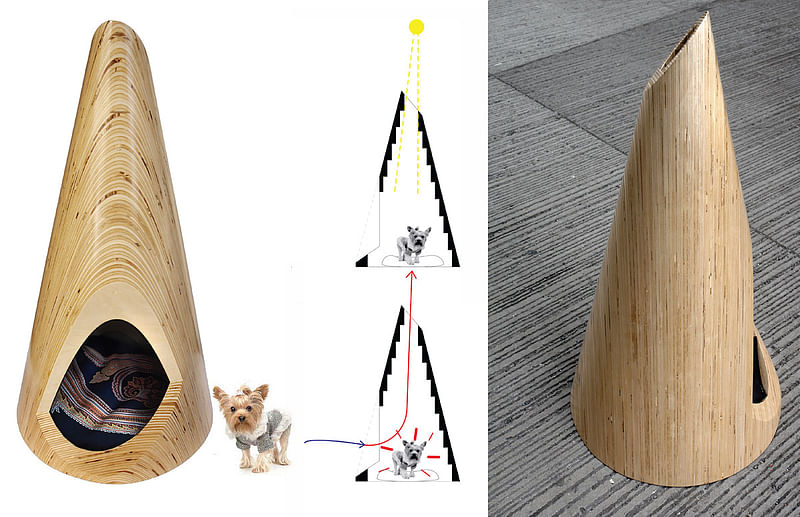
Puptent; New York City
slade architecture
This piece was an exploration in materials designed and fabricated for the Design Trust for Public Spaces Annual Auction. The design is for a modern, indoor dog lounge or PUP TENT. Water-jet cut plywood was laminated to create a conical shape. The exterior surface was sanded and finished smooth and the interior maintains the stepping configuration characteristic of the plywood lamina. A surface pattern is created as the planar plies of the wood intersect with the conical geometry of the surface.
Architecture in the Public Interest

Art as Shelter; Raleigh, North Carolina
Tonic Design
Designed and built as an integral component of the North Carolina Museum of Art Park’s ‘art-in-service’ projects program, ‘Art as Shelter’ offers visitors a sheltered place to sit and reflect upon the museum sculpture park and public greenway. Viewed as an object in the landscape or experienced from within, the pavilion offers magnificent veiled panoramic views of the surrounding landscape.

SplitFrame; Portland, Connecticut
North Studio at Wesleyan University
SplitFrame is a wildlife viewing structure designed and constructed to maximize environmental exposure while minimizing impact, both in construction and over the projected life of the structure. Sited in a publicly accessible wildlife sanctuary, the core of the project consists of two integral pieces - a floating Observation Deck and an elevated viewing station - connected via a hinged staircase, allowing the observation Deck to rise and fall with the seasonal change in water levels.

Share
0 Comments
Comment as :